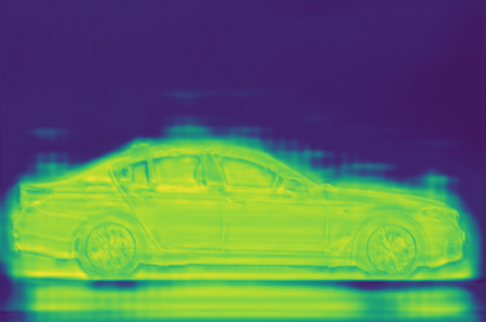Semantic segmentation with U-Net
Deep Learning for Images with PyTorch

Michal Oleszak
Machine Learning Engineer
Semantic segmentation
- No distinction between different instances of the same class
- Useful for medical imaging or satellite image analysis
- Popular architecture: U-Net
U-Net architecture

Encoder:
- Convolutional and pooling layers
- Downsampling: reduces spatial dimensions while increasing depth
U-Net architecture

Decoder:
- Symmetric to the encoder
- Upsamples feature maps with transposed convolutions
U-Net architecture

Skip connections:
- Links from the encoder to the decoder
- Preserve details lost in downsampling
Transposed convolution

- Upsamples feature maps in the decoder: increases height and width while reducing depth
- Transposed convolution process:
- Insert zeros between or around the input feature map
- Perform a regular convolution on the zero-padded input
Transposed convolution in PyTorch
import torch.nn as nn
upsample = nn.ConvTranspose2d(
in_channels=in_channels,
out_channels=out_channels,
kernel_size=2,
stride=2,
)
U-Net: layer definitions
class UNet(nn.Module): def __init__(self, in_channels, out_channels): super(UNet, self).__init__()self.enc1 = self.conv_block(in_channels, 64) self.enc2 = self.conv_block(64, 128) self.enc3 = self.conv_block(128, 256) self.enc4 = self.conv_block(256, 512) self.pool = nn.MaxPool2d(kernel_size=2, stride=2)self.upconv3 = nn.ConvTranspose2d(512, 256, kernel_size=2, stride=2) self.upconv2 = nn.ConvTranspose2d(256, 128, kernel_size=2, stride=2) self.upconv1 = nn.ConvTranspose2d(128, 64, kernel_size=2, stride=2)self.dec1 = self.conv_block(512, 256) self.dec2 = self.conv_block(256, 128) self.dec3 = self.conv_block(128, 64) self.out = nn.Conv2d(64, out_channels, kernel_size=1)
- Encoder:
- Convolutional blocks
def conv_block(self, in_channels, out_channels): return nn.Sequential( nn.Conv2d(in_channels, out_channels), nn.ReLU(inplace=True), nn.Conv2d(out_channels, out_channels), nn.ReLU(inplace=True) ) - Pooling layer
- Convolutional blocks
- Decoder:
- Transposed convolutions
- Convolutional blocks
U-Net: forward method
def forward(self, x):x1 = self.enc1(x) x2 = self.enc2(self.pool(x1)) x3 = self.enc3(self.pool(x2)) x4 = self.enc4(self.pool(x3))x = self.upconv3(x4)x = torch.cat([x, x3], dim=1)x = self.dec1(x)x = self.upconv2(x) x = torch.cat([x, x2], dim=1) x = self.dec2(x) x = self.upconv1(x) x = torch.cat([x, x1], dim=1) x = self.dec3(x)return self.out(x)
- Pass input through encoder's convolutional blocks and pooling layers
- Decoder and skip connections:
- Pass encoded input through transpose convolution
- Concatenate with corresponding encoder output
- Pass through convolution block
- Repeat for all decoder steps
- Return output of the last decoder step
Running inference
model = UNet() model.eval()image = Image.open("car.jpg") transform = transforms.Compose([transforms.ToTensor()]) image_tensor = transform(image).unsqueeze(0)with torch.no_grad(): prediction = model(image_tensor).squeeze(0)plt.imshow(prediction[1, :, :]) plt.show()


Let's practice!
Deep Learning for Images with PyTorch

